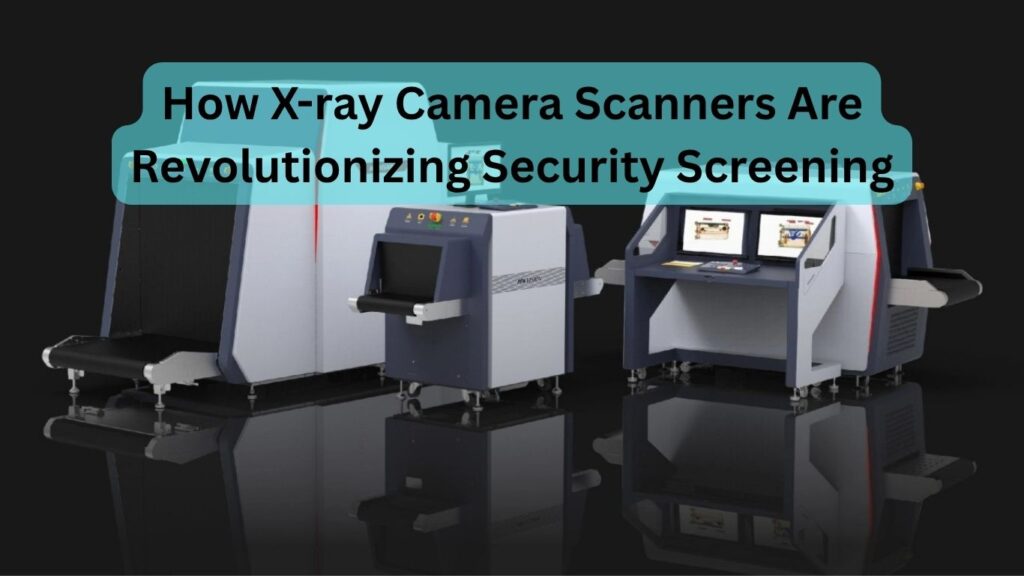Security screening has long been the frontline of defense in high-risk environments—airports, government buildings, border checkpoints, cargo terminals, and more. As threats grow more sophisticated, so too must the technology used to detect them. In this evolving landscape, the X-ray camera scanner stands out as a transformative tool.
More than just an enhancement of older X-ray systems, this advanced technology is redefining how objects are inspected, concealed threats are identified, and safety is maintained without compromising speed and efficiency.
An X-ray camera scanner is not merely an imaging device. It is a sophisticated fusion of digital imaging, automated threat recognition, real-time analytics, and ergonomic design. By combining powerful X-ray penetration capabilities with intelligent detection algorithms, these scanners offer far greater accuracy and insight than their predecessors. They are now essential in high-throughput security environments where precision and speed are equally vital.
The Technology Behind X-ray Camera Scanners
At the heart of modern X-ray camera scanners is a digital imaging system capable of producing highly detailed visuals of scanned items, whether they are luggage, parcels, cargo containers, or vehicles. These scanners work by emitting a controlled beam of X-rays that pass through the object. As the rays interact with different materials—metal, plastic, organic compounds—they are absorbed or scattered in varying degrees. Detectors then capture this interaction and convert it into digital images.
What sets the new generation of scanners apart is their ability to process these images using advanced software. The integration of artificial intelligence enables the system to automatically highlight suspicious objects, differentiate between organic and inorganic substances, and recognize patterns associated with contraband or weapons. This greatly enhances the efficiency of human operators, who can now make faster, more informed decisions.
Moreover, X-ray camera scanners today are built to handle diverse environments. From compact, mobile units used in event venues and remote locations to large-scale vehicle and cargo inspection systems at border crossings, the technology has scaled in both form and function. All of this is achieved without sacrificing the quality of image output or the depth of analysis.
Enhancing Security Without Delays
One of the most significant advantages of X-ray camera scanners is their ability to streamline security processes without compromising thoroughness. In airports and transport hubs where time is critical, traditional inspection methods often create bottlenecks. Manual checks, outdated scanners, and inefficient layouts contribute to long wait times and passenger frustration.
With high-resolution imaging, real-time analysis, and automated alerts, X-ray camera scanners drastically reduce the need for manual intervention. Security personnel are alerted only when anomalies are detected, allowing them to focus their attention where it is truly needed. This not only speeds up the screening process but also ensures that resources are used efficiently.
In cargo screening, time is even more sensitive. Delays in inspecting containers and goods can disrupt supply chains, lead to financial losses, and even pose geopolitical risks. By enabling non-intrusive inspection of large volumes, X-ray camera scanners help maintain the flow of commerce while upholding the highest safety standards.
Identifying Evolving Threats
Modern threats are no longer limited to easily identifiable weapons or banned substances. Concealed items, improvised explosive devices (IEDs), and biologically hazardous materials are often disguised in ways that evade traditional detection methods. X-ray camera scanners equipped with machine learning capabilities are trained to recognize new threats based on evolving patterns, real-world data, and continuous updates.
Their ability to detect anomalies in shape, density, and composition makes them especially effective in high-risk environments. Unlike traditional scanners that rely solely on visual recognition by human eyes, these systems analyze data at a level of detail that is often invisible to the naked eye. This translates into a higher success rate in identifying hidden dangers.
In addition, dual-energy technology in some X-ray camera scanners allows for material discrimination—distinguishing between metals, plastics, liquids, and organic matter. This not only aids in threat detection but also reduces the number of false positives, allowing for smoother operations and fewer unnecessary bag checks.
Improving Operator Efficiency
Security is only as strong as the people who enforce it. Even the most advanced systems can fall short if human operators are overwhelmed or undertrained. X-ray camera scanners enhance operator performance by offering user-friendly interfaces, real-time visual feedback, and intelligent alert systems.
Color-coded imagery helps differentiate between material types at a glance. Suspicious items are automatically flagged and highlighted. Zoom functions, 3D rendering, and image comparison tools enable operators to inspect suspicious areas in greater detail without needing to re-scan or open the package. All of this reduces cognitive load and speeds up decision-making.
Conclusion
The X-ray camera scanner is more than a piece of security equipment—it is a strategic asset in the fight against modern threats. By providing real-time, intelligent, and non-intrusive inspection capabilities, it enhances security across sectors without sacrificing operational efficiency. Whether in transportation, logistics, government, or critical infrastructure, this technology is transforming how we approach safety.
As risks continue to evolve, the demand for smarter, faster, and more accurate security tools will only increase. Organizations that invest in advanced X-ray camera scanners today are not only safeguarding their people and assets—they are building the foundation for a more secure and resilient future.


